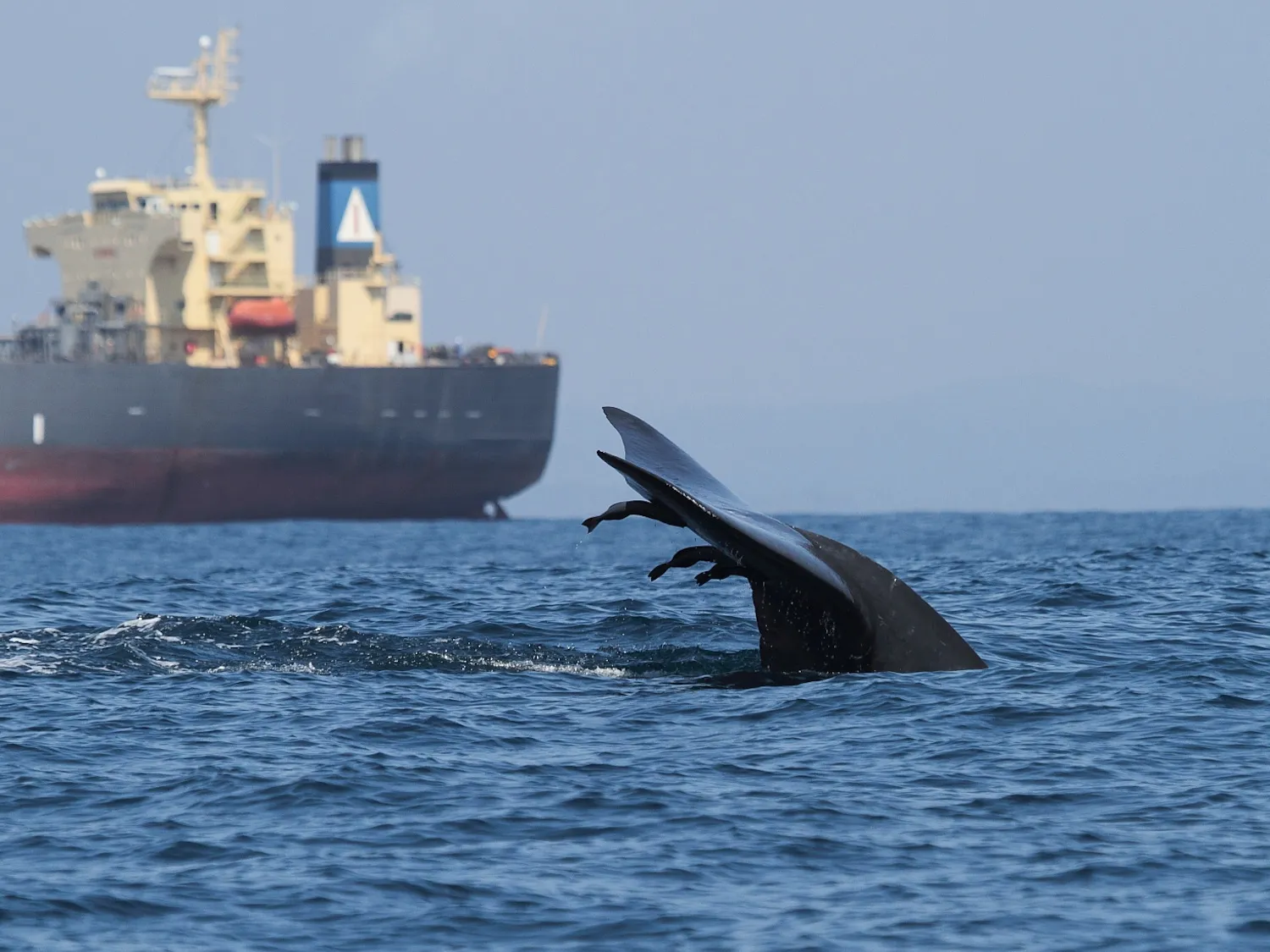Media release
From:
Whale-ship collision risk mapped across Earth’s oceans
Science
By mapping global ship traffic and whale habitats, researchers found that 92% of whale habitats overlap with shipping routes, illuminating hotspots for whale-ship collision risk, according to a new study. Although only 7% of high-risk areas currently contain management strategies to reduce ship strikes, the findings show that expanding efforts to just 2.6% of the ocean’s surface could significantly reduce these fatal collisions, aiding whale conservation amid booming global shipping.
“Mitigating the negative environmental impacts of marine shipping is essential for the coming decades,” write the authors. “Ship-strike risk is a ubiquitous yet solvable conservation challenge for large whales, and our results can provide a foundation for expanded management measures to protect these ocean giants.”
The global shipping industry poses significant threats to marine ecosystems. Among these, collisions with ships – ship strikes – have become a concerning source of whale mortality worldwide. Although many large whale species struggle to recover from centuries of commercial whaling, these animals play vital ecological roles and hold cultural and economic significance. Ship collisions contribute to unsustainable mortality rates for several populations, including critically endangered species.
Given the global nature of both maritime shipping and whale migrations, addressing ship strikes requires a comprehensive understanding of risk patterns on an international scale. However, while regional studies on whale-ship collision risks have grown in number, the global spatial distribution of this threat remains largely uncharted.
Here, Anna Nisi and colleagues combined extensive data on whale locations – ~435,000 observations for 4 globally ranging species from hundreds of datasets – with automated identification system (AIS) positional data for nearly 176,000 large vessels to identify ship-strike hotspots for blue, fin, humpback and sperm whales.
Nisi et al. found that global shipping overlaps with 92% of whale habitats, yet fewer than 7% of identified high-risk areas are managed to mitigate ship-whale collisions. Notably, however, the authors show that expanding ship-strike mitigation efforts, such as implementing vessel speed reduction zones, over just 2.6% of the ocean could significantly reduce fatal collisions in all high-risk areas.
For reporters interested in trends, an October 2024 in Science Robotics presented a method for using unpiloted aerial vehicles (UAVs) to track the movement of large whales autonomously.



 Australia; QLD; WA
Australia; QLD; WA



